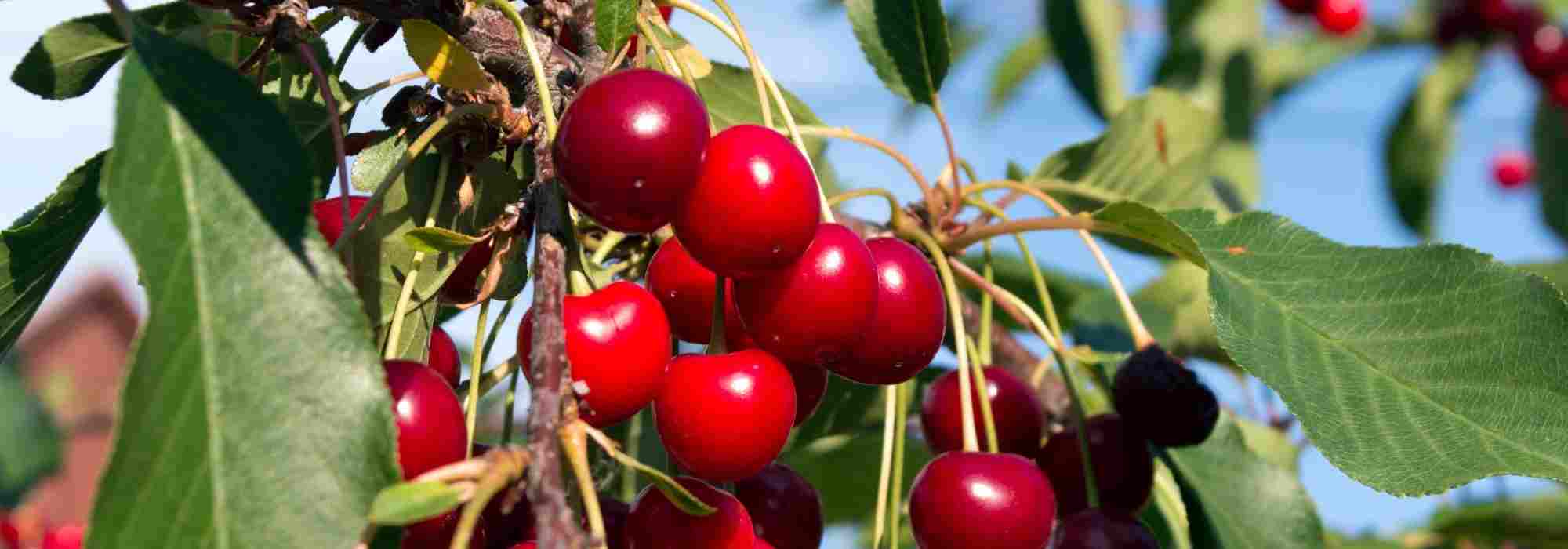
Which cherry tree to plant for a harvest of large sweet cherries?
Selection of cherry trees that produce the largest and most flavoursome fruits
Contents
In June comes the cherry season. The markets overflow with crisp, juicy cherries that are simply irresistible and make our mouths water. While cherries are wonderful enjoyed as they are, they also make delicious clafoutis, tarts or jams. If you have enough space in your garden, why not plant a cherry tree? With over 200 different varieties available, the choice isn’t always single… Among the criteria for selecting the variety best suited to your desires, the flavour and size of the cherries is paramount.
So if you’re literally melting for large, sweet cherries, discover our selection of the best cherry tree varieties to plant in your garden.
What you need to know before buying a cherry tree with large, juicy cherries
The cherry tree is an undemanding fruit tree that grows in all types of soil, provided they are perfectly drained, rather deep and cool. It has a hardiness of around -15 to -20°C: in other words, it can be planted anywhere. However, the flowers of the cherry tree are relatively sensitive to spring frosts. If you live in a region with long winters, opt for a late-flowering variety instead.
Before buying the cherry tree that will satisfy your craving for beautiful, sweet cherries, there are two essential things to know:
- The cherry trees available on the market today are the result of a long process of selection and hybridization from two species: the wild cherry (Prunus avium), which gave rise to bigarreaux and guignes, and the sour cherry (Prunus cerasus) with more acidic fruits. This is why if you’re looking for sweet cherries, you should definitely choose varieties derived from the wild cherry, and in particular bigarreaux, which have the advantage of producing large fruits with low acidity. The selection we offer is therefore mainly focused on bigarreau.
- Most cherry tree varieties, especially bigarreaux, are self-sterile. To ensure cross-pollination of the flowers and fruiting, you need to plant at least two compatible trees with parallel flowering periods. But your neighbour’s cherry tree, if it’s within a radius of 20 to 30 metres and is a compatible variety, can act as a pollinator. Some other cherry trees are self-fertile and can produce cherries even if planted alone.
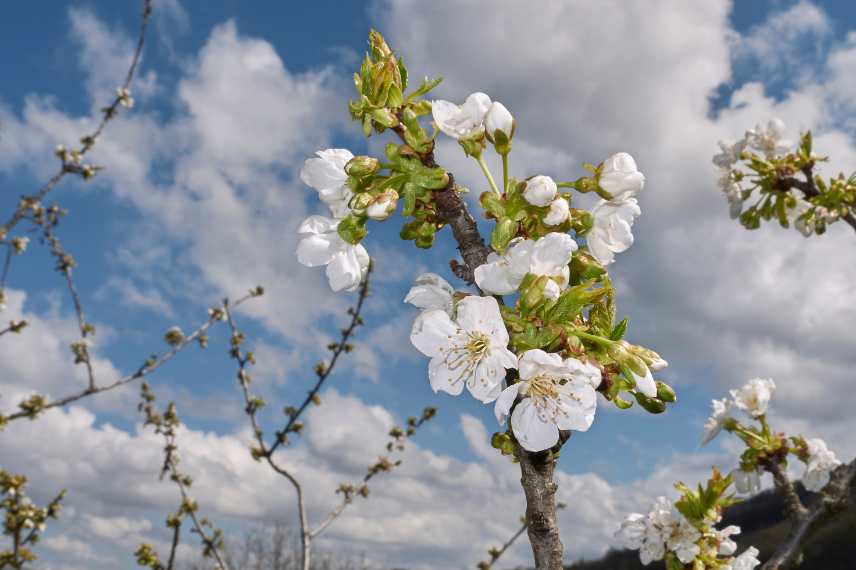
You often need two cherry trees, planted close to each other, to ensure cross-pollination
Selection of the best cherry trees with large, juicy cherries
All tastes are found in nature! Some enjoy slightly tangy, sweet or musky cherries, crisp and firm, or very juicy. If you’re partial to large, perfectly sweet cherries, discover our non-exhaustive selection of varieties that offer this type of cherry.
The ‘Noir de Meched’ Cherry Tree
The variety ‘Noir de Meched’ is undoubtedly one of the cherry trees that produces the sweetest and largest cherries. This heirloom variety, originating from Iran, yields cherries measuring between 2.5 and 2.7 cm in diameter, weighing 8 to 10 g. These heart-shaped cherries boast a thick, dark purple epidermis, almost black when fully ripe, with firm, very sweet flesh. With long peduncles, they are also exceptionally fleshy and fragrant—both crisp and melting, with no trace of acidity.
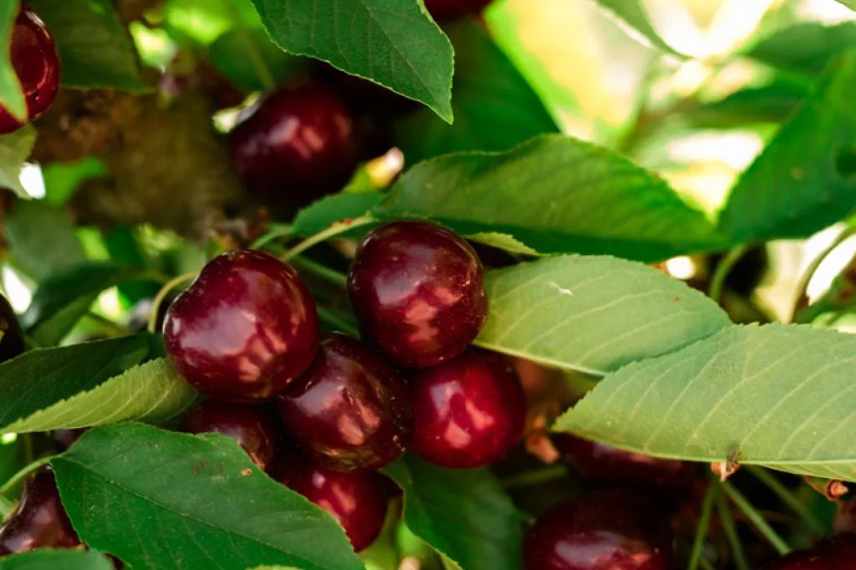
This variety is vigorous and highly productive, fairly robust against diseases. Its cherries resist splitting. Flowering is relatively late (around mid-April). The harvest spans from late June to mid-July.
This cherry tree requires cross-pollination with varieties such as ‘Summit’, ‘Kordia’, or ‘Regina’.
The ‘Bigarreau de la Saint-Jean’® Cherry Tree
The variety ‘Bigarreau de la Saint-Jean’ is a self-fertile cherry tree, created by Georges Delbard, renowned for producing large, deep-red cherries with a distinctly sweet flavour, rather mild and intensely fragrant. Its cherries are particularly fleshy and firm, with a small stone, and resist splitting even in heavy rain. These cherries are ideal for snacking or baking.
Flowering occurs in April, with harvest in June. As this variety is self-fertile, it does not require another cherry tree nearby. It is suitable for container growing.
The ‘Canada Giant’® Cherry Tree
As its name suggests, the variety ‘Canada Giant’ originates from Canada and produces very large fruits. It is an improved version of ‘Summit’, with faster fruiting. The heart-shaped cherries of this variety display a size of around 2.8 to 3 cm and a bright red colour. Besides being sweet, they are juicy and flavourful. They resist splitting very well.
Flowering is relatively early, starting in late March. Harvest begins in early June.
Not self-fertile, this cherry tree can be paired with varieties such as ‘Hedelfingen’, ‘Noire de Meched’, or ‘Kordia’.
The ‘Bigalise’ Cherry Tree
The variety ‘Bigalise’ was developed by Georges Delbard in 2008 and named by pastry chef Pierre Hermé. Suffice to say, sugar reigns supreme in these exceptionally large cherries (up to 3.2 cm! Equivalent to a €2 coin), which sport a very shiny red. These cherries can be enjoyed as they are or incorporated into desserts, thanks to their texture—both firm and tender. They are very fleshy, highly fragrant, and of excellent taste quality.
Flowering, quite late, occurs between mid- and late April. Harvest begins in mid-June.
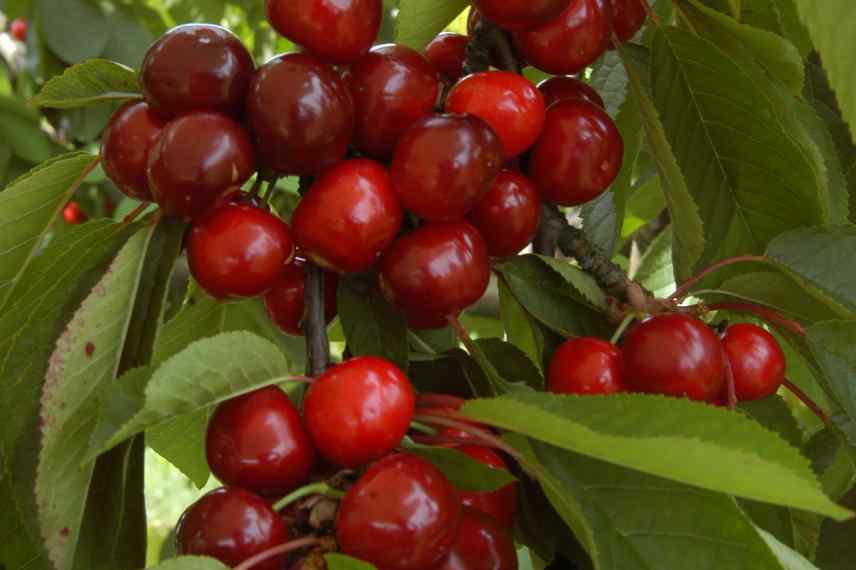
Not self-fertile, this cherry tree must be pollinated by ‘Burlat’ or ‘Hâtif Delbard®’.
The ‘Cœur de pigeon’ Cherry Tree
The variety ‘Cœur de pigeon’ also produces large cherries with the distinctive feature of skin that fades from bright yellow to light red. The flesh is rather yellow, sweet with a slight tang, firm and crisp. These cherries can be enjoyed fresh or in pastries. They have excellent keeping qualities.
The tree is known for its vigour. Flowering occurs in mid-April, with harvest spanning from mid-June to mid-July.
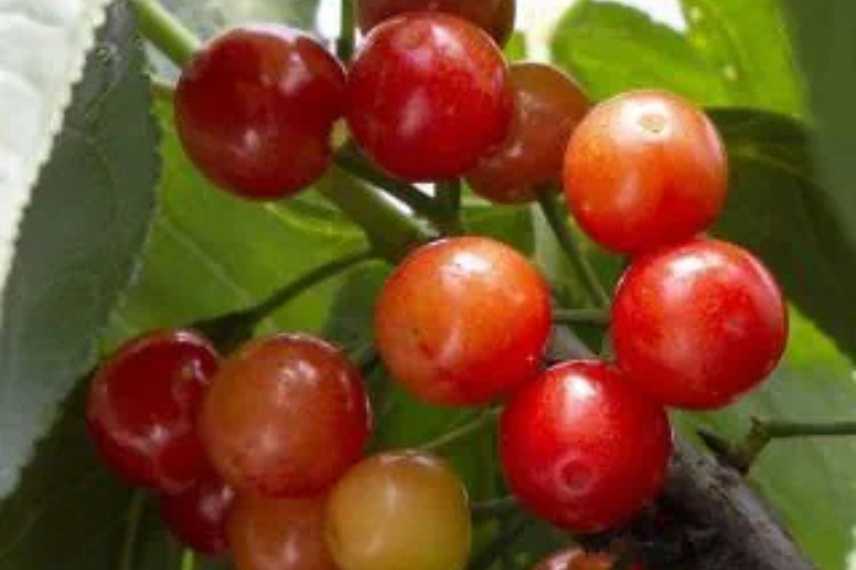
Self-sterile, this bigarreau can be pollinated by varieties such as ‘Napoléon’ or ‘Burlat’.
The ‘Marmotte’ Cherry Tree
The variety ‘Marmotte’ is an heirloom variety from 1850, very distinctive, producing large, even very large fruits of a dark, shiny red. Truly sweet, its slightly elongated heart-shaped cherries still carry a subtle tangy note. The flesh is abundant, firm and crisp.
The tree flowers between late March and mid-April, with harvest from late June to mid-July. This variety fruits very quickly, within 2 to 3 years after planting.
Not self-fertile, ‘Marmotte’ must be pollinated by ‘Burlat’ or ‘Reverchon’.
The ‘Early River’ True Cherry
To conclude our selection, let’s look at a variety of sour cherry, ‘Early River’. This cherry tree produces large, dark, shiny red fruits, with light red flesh that is tender, almost soft, juicy and sweet. It is a self-fertile variety with compact growth, suitable for container growing.
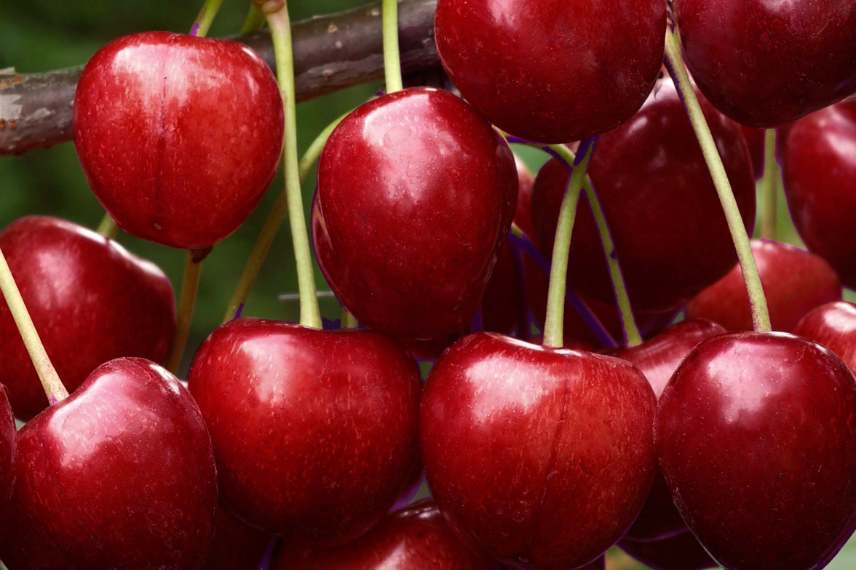
Its flowering is early, between March and April, and harvest is precocious, by mid-June. Additionally, it has low-hanging foliage, making picking easier.
- Subscribe!
- Contents
































Comments